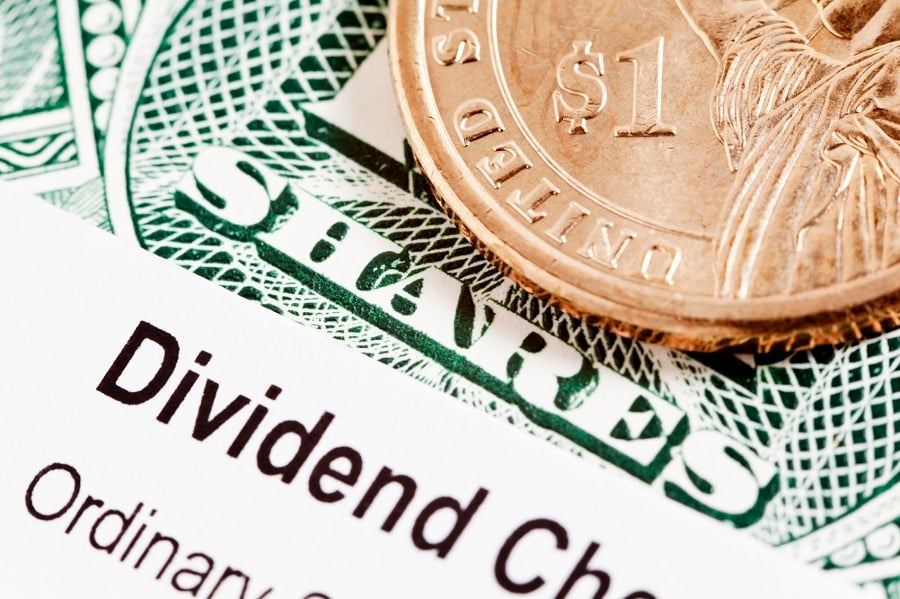

There’s nothing quite like a stock market correction to create newly skewed perspectives on dividend investing.
As we saw during the 2008 financial crisis, when some politicians started spouting off about the spiking dividend yields of banks that were being bailed out, stock dividends can be misleading.
Both Bank of America and Citigroup saw their dividend yields climb a couple of percentage points, to 7%, from 2007 to 2008, causing some less sophisticated onlookers to cry foul.
In reality, the dollar amount of the banks' dividend payouts was unchanged; the dividend yield percentages were increasing in direct relation to the banks' falling stock prices, because a dividend yield represents the amount of the dividend payout divided by the stock price.
That’s kind of where we are today. Amid the increased attention being paid to what might seem like attractive dividend income as stock market volatility rises, it would be easy to fall into a value trap of chasing high dividend yields.
But a simple screen for funds paying the highest dividend yields can take you to places you probably don’t want to be right now.
According to Morningstar, the VanEck Russia Small-Cap ETF (RSXJ) boasts a 12-month dividend yield of 310%, which is bested by the 448% yield from the VanEck Russia ETF (RSX). But the real statement is being made by the iShares MSCI Russia ETF (ERUS), which comes with a yield of 3,092%.
In addition to underscoring the perils of screening for yield based on past performance, those Russia funds should stand as a reminder that dividend yields aren’t always what they’re cracked up to be.
In the case of the Russia funds, the yields are where they are because the funds have been classified as uninvestible as fund managers have marked the value of the underlying securities down to near zero, said Daniel Sotiroff, senior analyst on the passive strategies team at Morningstar.
In addition to the Russia funds, the list of top-yielding funds includes a healthy blend of thematic strategies that have taken a hit and lots of commodity funds that use futures contracts and derivatives, and count any income thrown off as yield.
But this isn’t to suggest the dividend story isn’t real.
A new report by Janus Henderson Investors shows that U.S.-based companies continue to set the global pace for dividend payouts.
Matt Peron, director of research at Janus Henderson, said that if U.S. companies made it through the pandemic without cutting dividends, they're not likely to cut them during a recession.
“The U.S. story is quite strong, and it continues to be the global juggernaut when it comes to dividends,” Peron said. “During the pandemic, companies cut stock buybacks aggressively, but they were able to maintain the dividends.”
Part of the reason for the stickiness of dividend payouts is that sophisticated investors generally view a dividend cut as a red flag that signals balance sheet trouble ahead.
With that in mind, Morningstar’s Sotiroff recommends keeping dividend yield targets in perspective, which could mean radically lowering expectations.
Two funds he feels comfortable recommending are Vanguard High Dividend Yield ETF (VYM), which is yielding 2.88%, and Vanguard Institutional High Dividend Yield ETF (VYMI), yielding 4.45%.
While the yields might seem like a rounding error to some of the high fliers out there, they're still about 1.5 percentage points above the market, and the Vanguard examples are diversified. They are also market-cap weighted, which means the largest and most stable companies represent the largest exposure in the funds.
“Some people will want to shoot for the moon and go after higher yields,” Sotiroff said. “But dividend yields are historical, so you need to consider if it’s sustainable or not.”

The 25-year industry veteran previously in charge of the Wall Street bank's advisor recruitment efforts is now fulfilling a similar role at a rival firm.

Former Northwestern Mutual advisors join firm for independence.

Executives from LPL Financial, Cresset Partners hired for key roles.

Geopolitical tension has been managed well by the markets.

December cut is still a possiblity.
Streamline your outreach with Aidentified's AI-driven solutions
This season’s market volatility: Positioning for rate relief, income growth and the AI rebound
